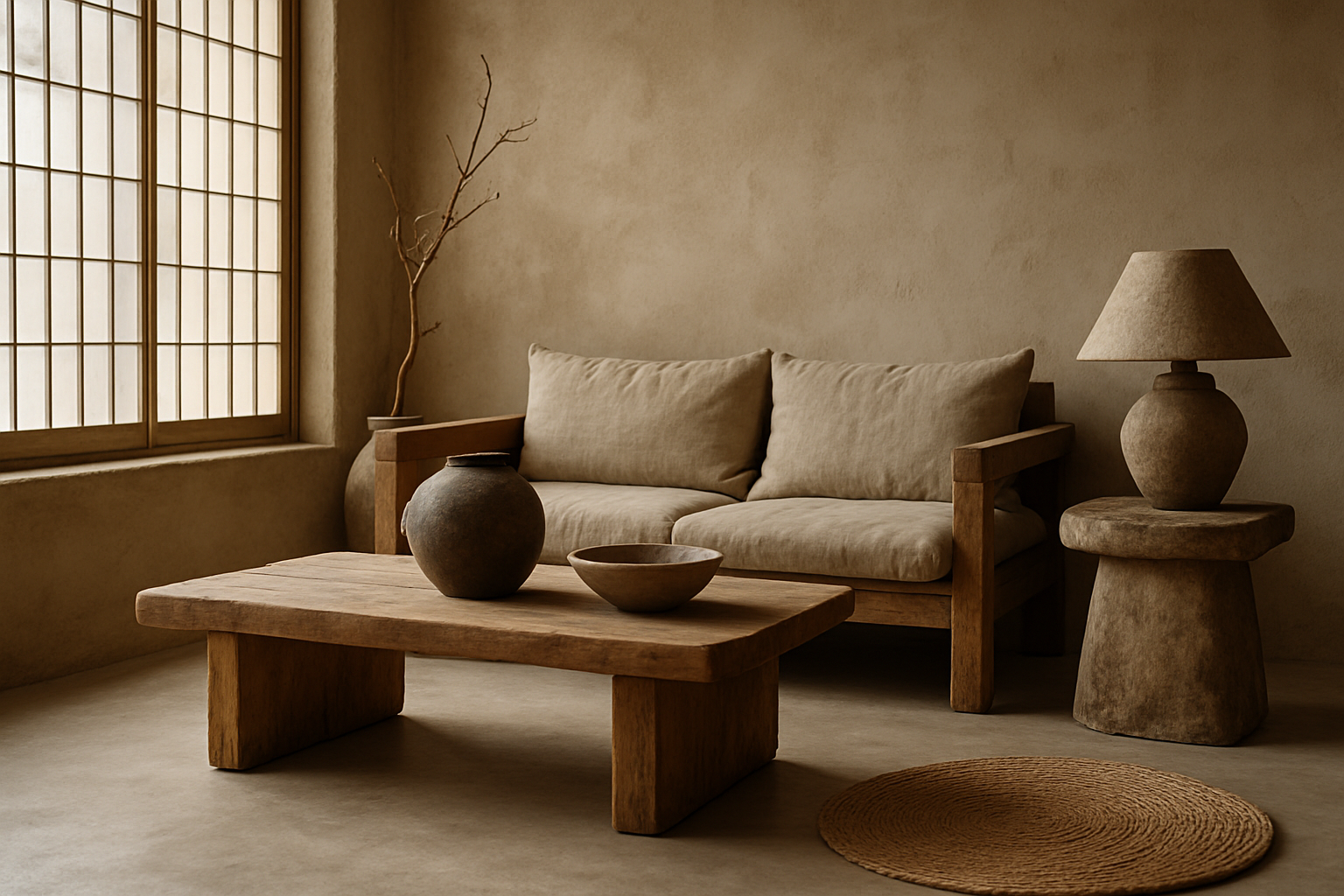Embracing Wabi-Sabi in Modern American Homes
The art of imperfection finds its place in contemporary design, as more homeowners embrace the Japanese aesthetic philosophy of wabi-sabi. This ancient concept, which celebrates the beauty in flaws and the passage of time, is reshaping how we approach interior design and daily living. From weathered wood to handcrafted ceramics, wabi-sabi offers a refreshing counterpoint to the polished perfection often sought in home decor.

The Roots of Wabi-Sabi
Wabi-sabi traces its origins to 16th century Japanese tea ceremonies, where humble, handmade items were prized over ornate, mass-produced goods. The term combines two concepts: wabi, which refers to simplicity and a reverence for nature, and sabi, which embraces the beauty that comes with age and wear.
In traditional Japanese aesthetics, wabi-sabi manifested in rustic tea houses, irregular pottery, and the appreciation of natural processes like weathering and patina. It stood in stark contrast to the ostentatious displays of wealth common in other parts of the world during the same period.
As it evolved, wabi-sabi became more than just an aesthetic choice – it became a philosophical approach to life, encouraging mindfulness, acceptance, and finding beauty in the everyday.
Wabi-Sabi in the American Context
The introduction of wabi-sabi to American design sensibilities marks a significant shift from the long-standing pursuit of perfection and newness. In a culture often fixated on the latest trends and unblemished surfaces, wabi-sabi offers a refreshing alternative that resonates with those seeking authenticity and a deeper connection to their living spaces.
American designers and homeowners are interpreting wabi-sabi through a distinctly Western lens, blending its principles with local materials and aesthetics. This fusion results in interiors that feel both grounded and globally inspired, creating spaces that are uniquely American yet informed by ancient Japanese wisdom.
Key Elements of Wabi-Sabi Design
To incorporate wabi-sabi into home decor, focus on these essential elements:
-
Natural Materials: Favor materials like wood, stone, clay, and linen. Look for pieces with visible knots, grain patterns, or irregular textures.
-
Muted Color Palette: Embrace earthy tones and subtle hues inspired by nature. Think soft greys, warm browns, and muted greens.
-
Handcrafted Items: Incorporate handmade ceramics, textiles, and furniture. The slight imperfections in these pieces add character and charm.
-
Minimalism: Keep spaces uncluttered and focus on items that are both functional and beautiful. Each object should have purpose and meaning.
-
Patina and Wear: Instead of discarding items that show signs of age, celebrate their history. A weathered wooden bench or a crackled ceramic vase becomes a focal point.
Practical Applications in the Home
Living Room: Create a serene atmosphere with a low-slung sofa in natural linen, accented with handwoven throw pillows. A reclaimed wood coffee table becomes a conversation piece, its scratches and dents telling stories of its past.
Kitchen: Opt for open shelving made from unfinished wood to display a collection of handmade pottery. Choose utensils with wooden handles that will develop a beautiful patina over time.
Bedroom: Layer the bed with organic cotton sheets in soft, muted tones. A gnarled branch found on a nature walk can become a unique wall hanging, bringing the outside in.
Bathroom: Install a stone sink with rough edges for a tactile experience. Use a weathered wooden ladder as a towel rack, adding both functionality and visual interest.
Garden: Embrace the wabi-sabi aesthetic outdoors by allowing plants to grow naturally, avoiding overly manicured looks. Incorporate weathered stone pathways and let moss grow between the cracks.
The Psychological Benefits of Wabi-Sabi
Beyond its aesthetic appeal, wabi-sabi offers significant psychological benefits in our fast-paced, often stressful modern world. By surrounding ourselves with imperfect objects and embracing the passage of time, we can cultivate a greater sense of peace and acceptance in our daily lives.
Research has shown that environments inspired by nature and simplicity can reduce stress and improve overall well-being. The wabi-sabi approach encourages mindfulness, prompting us to slow down and appreciate the beauty in everyday moments.
Moreover, by valuing imperfection and age, wabi-sabi can help counteract the constant pressure for newness and perfection that permeates much of American consumer culture. This shift in perspective can lead to more sustainable choices and a deeper appreciation for what we already have.
Challenges and Considerations
While wabi-sabi offers a compelling alternative to mainstream design aesthetics, it’s not without its challenges. In a culture that often equates newness with value, it can be difficult to convince some homeowners of the beauty in weathered or imperfect items.
Additionally, there’s a fine line between thoughtful wabi-sabi design and a space that simply looks neglected. The key lies in intentionality – each element should be chosen with care and purpose, even if it bears the marks of time and use.
It’s also important to approach wabi-sabi with cultural sensitivity, avoiding appropriation and instead seeking to understand and respect its philosophical underpinnings.
The Future of Wabi-Sabi in American Homes
As more Americans seek alternatives to the relentless pursuit of perfection, wabi-sabi is poised to gain further traction in home design. Its principles align well with growing interests in sustainability, mindfulness, and authentic living.
We can expect to see more collaborations between American designers and Japanese artisans, resulting in unique pieces that blend both cultural aesthetics. Additionally, the rise of social media platforms focused on slow living and mindful design will likely contribute to the spread of wabi-sabi principles.
Ultimately, the embrace of wabi-sabi in American homes represents more than just a design trend. It reflects a deeper shift in values, encouraging us to find beauty in imperfection, peace in simplicity, and meaning in the passage of time. As we navigate an increasingly complex world, the timeless wisdom of wabi-sabi offers a path to creating homes that are not just beautiful, but deeply restorative and profoundly human.





